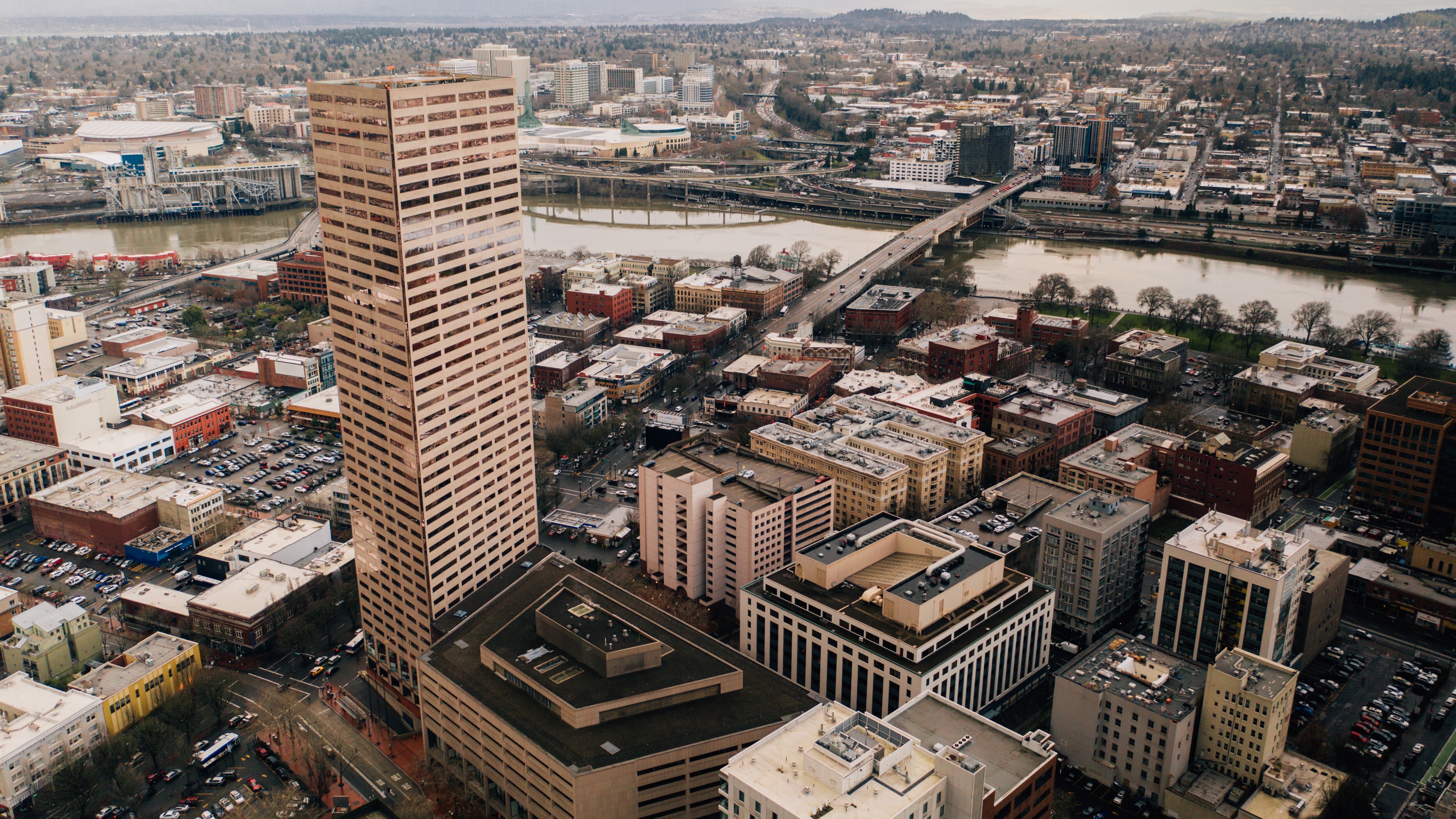The Eastbank Esplanade is an icon of the Portland waterfront. Joggers pound along the floating walkway, cyclists zip downtown from the Lloyd District, and homeless campers abound. A life-sized statue of Vera Katz, the diminutive but tough late Portland mayor, perches on a wall, the Willamette River at her back.
And it's a place that's poised to take on new significance in the fight over the state's largest transportation project.
That project—a proposed billion-dollar widening of Interstate 5 through the Rose Quarter—could require adding yards of concrete that would loom over the esplanade.
Bob Sallinger, conservation director of the Audubon Society of Portland, describes the potential results this way: "The way the ramps would jet out over the esplanade [it would] essentially make it into something of a cave, increasing noise, increasing pollution, increasing shadowing, undermining the experience that people will have at a time when this community is prioritizing reconnecting with the river."
But environmental leaders say this threat also offers Portland an opportunity: The walkway is a pinch point city leaders could exploit to delay and reshape the highway project.
For highway engineers to proceed, the city of Portland has to agree in writing to proposed changes to the Eastbank Esplanade. Federal law says that can happen one of two ways: The city could agree that allowing the highway to hang over the esplanade is a minimal change to the waterfront. Or the city and state could reach a deal in which the state would agree to make improvements to the park to compensate the city for any changes.
Mayor Ted Wheeler could order Portland Parks & Recreation to reach such a deal. Or he could refuse—and call for the Oregon Department of Transportation to take a closer look at the health effects of the freeway expansion on parkgoers.
"I hope the city will not sign off," says Sallinger. "This is where the city needs to use its leverage."
Wheeler's office declined to say what he would decide. Wheeler spokesman Tim Becker said the mayor would meet with Parks Bureau leaders "to learn more about their perspective on potential impacts."
Disruption of the Eastbank Esplanade isn't the first or only way the desires and health of Portlanders conflict with the plans for a wider highway.
Portland Public Schools has raised objections about health effects the Rose Quarter project could have on students at Harriet Tubman Middle School, which stands adjacent to I-5. The project already faces scrutiny for its escalating costs—now estimated at up to $795 million—and the failure of the project to include caps over the highway to support the construction of new buildings.
Those caps, crucial to the Albina Vision Trust's plans to resurrect parts of Portland's African American community destroyed by the construction of I-5, could bring the project's price tag to more than $1 billion.
One key lawmaker isn't interested in funding what Portlanders want.
Last week, state Sen. Lee Beyer (D-Springfield), chairman of the Joint Transportation Committee, scoffed at the notion of freeway caps.
"If Portland wants to put lids and all that kind of stuff on freeways, the state's job is to make sure whatever we do allows that to happen, but we're not paying for it," Beyer told Oregon Public Broadcasting. "That's a local decision, local desire.
It's not part of the state highway system."
For the most part, city officials have been bystanders observing the state's highway expansion process. Local officials, including Wheeler, asked the state for a more thorough environmental review in December. But they had no authority to impede the project beyond the bully pulpit.
The Eastbank Esplanade could give them that leverage.
An attorney for the leading opponent of the highway expansion says if the city refuses to agree to changes along the esplanade, it could strengthen the argument for a wider environmental review of the entire project.
"If the city doesn't concur," says attorney Sean Malone, who has worked for the opponent, No More Freeways, "yes, the case is bolstered. It helps the case."
So far, the city hasn't objected to a cavern engulfing the waterfront.
A parks spokesman says the bureau is working toward an agreement with ODOT. But it has also asked state transportation officials to meet a requirement to get feedback from the public about the Eastbank Esplanade plan.
A document obtained by WW shows that as of September, the quiet negotiations between ODOT and the Parks Bureau included some possible efforts to mitigate the problems created by the highway expansion: more lighting to brighten the area shaded by the highway and boulders to discourage homeless camping.

